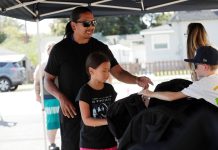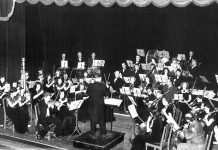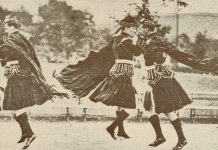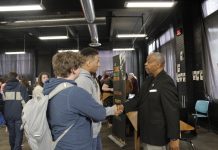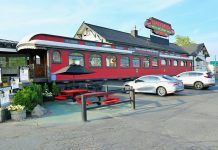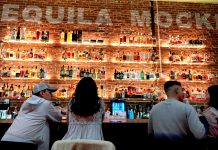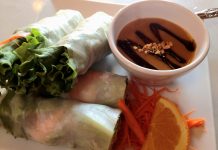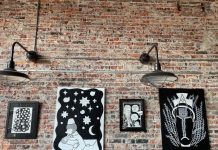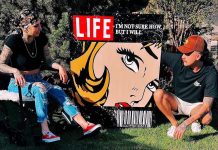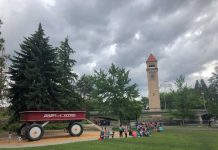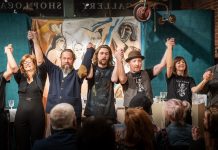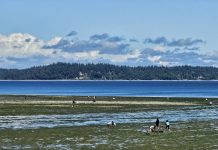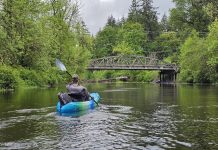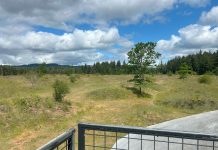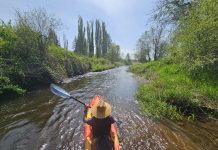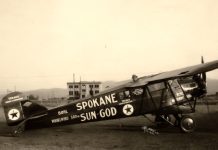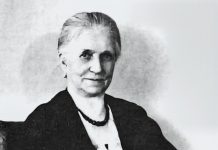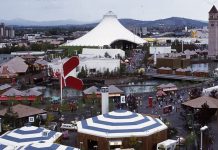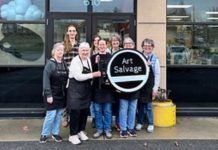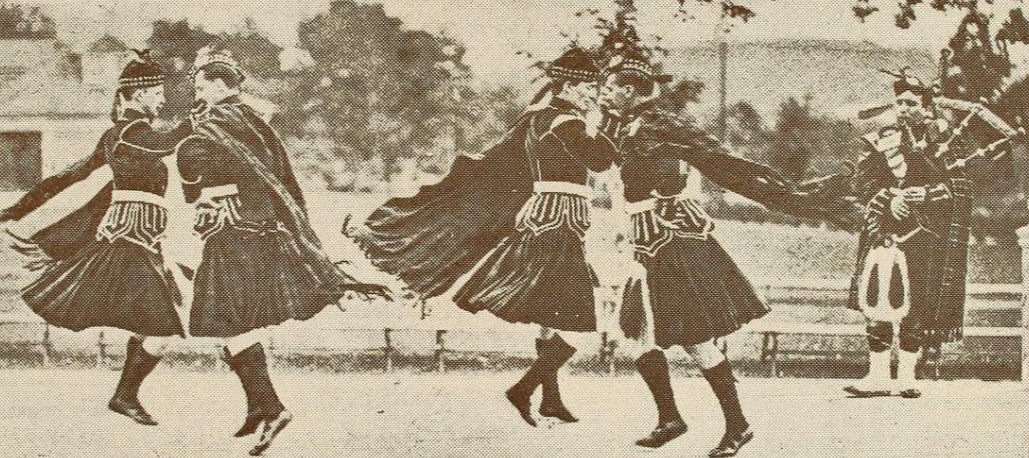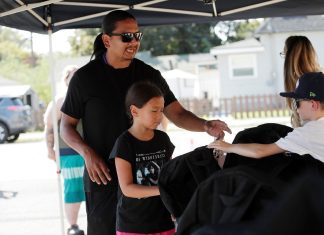Spokane has a rich Scottish heritage. Over the years the city has welcomed several bands with the name “Kilties.”
Scots in Spokane
Spokane has been home to many people of Scottish descent. In 1912, Sargeant Alex McDonald even jokingly suggested that kilts be made part of the summer uniform of the Spokane police department. The rest of the department did not agree.
Scottish immigrants and their descendants formed organizations to keep Scotland’s culture alive in Spokane. In the early 20th century, these included the Caledonian Society and St. Andrew’s Society. These groups held events for important Scottish holidays such as St. Andrew’s Day and Burns Night. Many of these celebrations involved music.
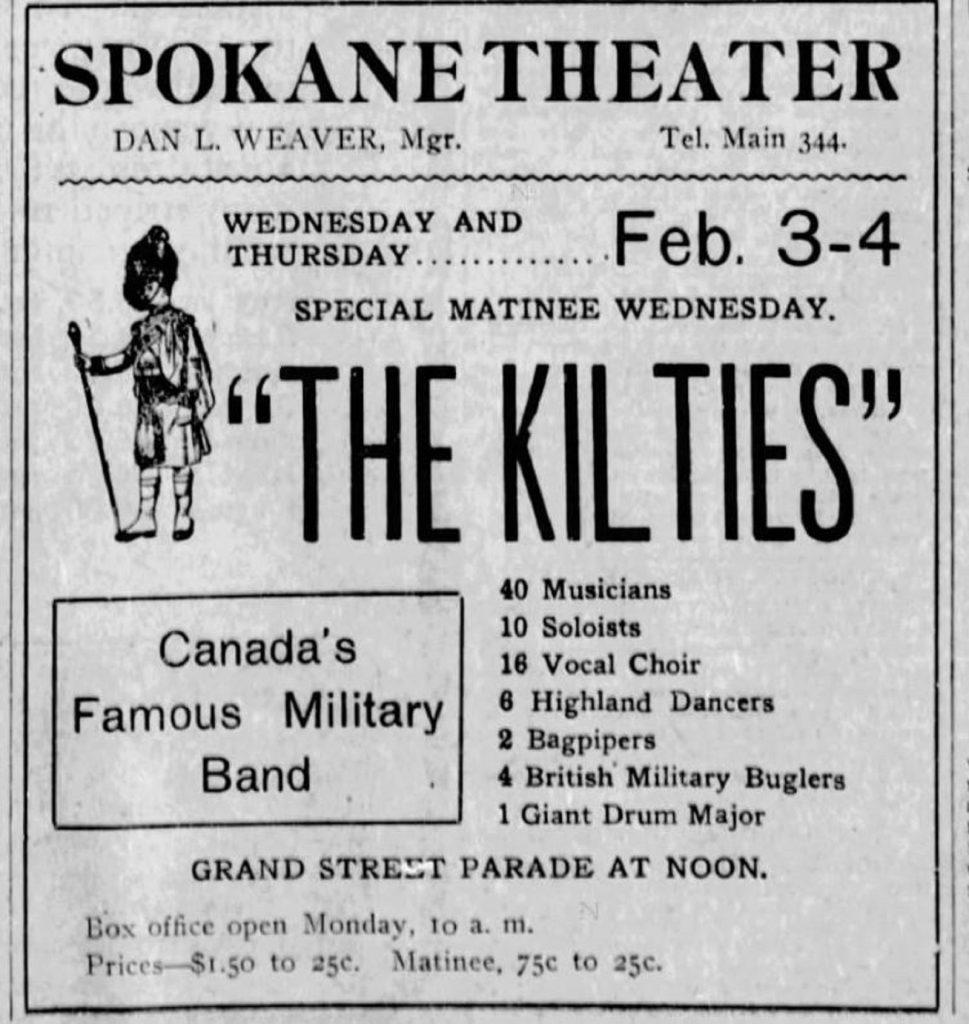
Hoot Mon! The Kilties are Comin’!
Perhaps the most well-known Scottish band of the era, the Kilties, hailed from Belleville, Canada. Made up of veterans from the 48th Highlanders of Canada, or Gordon Highlanders, the Kilties was Canada’s most famous touring band at the time. Playing everywhere, from major cities to mining camps, they made a striking sight in their kilted uniforms.
The band consisted of 40 musicians, ten soloists, ten vocal choir members, six Highland dancers, two bagpipers, four British military buglers and a seven-foot tall “giant drum major” named Donald MacCormack.
Another part of the Kilties was the Clan Johnstone Troupe dancers and pipers from London’s Palace Theater. They were led by Albert Johnstone, called by some the “world’s first piping superstar.” Born in 1864 in Lochee to a blacksmithing family, Johnstone became a champion Highland dancer and master bagpiper. He played for Queen Victoria and even at the 1889 Paris World’s Fair before joining the Kilties on their world tour.
The Kilties performed at the Spokane Theater on Wednesday, February 3 and Thursday, February 4, 1904. The band held four concerts, each slightly different, a matinee at 3 p.m. and an evening performance at 8:15 p.m. Matinee tickets cost from 25 cents to 75 cents while evening tickets costs 25 cents to a dollar.
They played a mix of traditional Scottish and popular contemporary music. The bagpipe music and Highland dancing were hits. Their souvenir booklet gives an overview of their traditional repertoire.
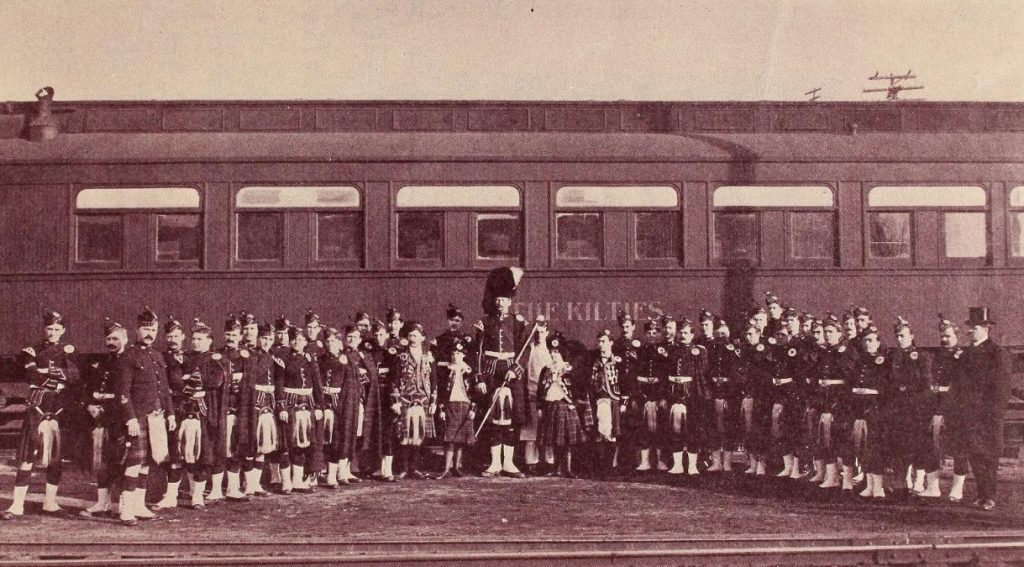
1907 Return to Spokane
The Kilties returned to the Spokane Theater for another visit on Thursday, November 7, 1907. Now on their 15th tour, “Canada’s famous military band” was greeted with open arms. Tickets cost 50 cents, 75 cents or a dollar.
The Kilties again performed popular contemporary music and Scottish classics. Euphonium soloist M.F. Cady’s performance was called upon for three encores. Another highlight was Scottish-American champion bagpiper and Highland dancer Angus McMillian Fraser. Besides bagpipe music, he performed the sword dance, sailor’s hornpipe and Highland fling.
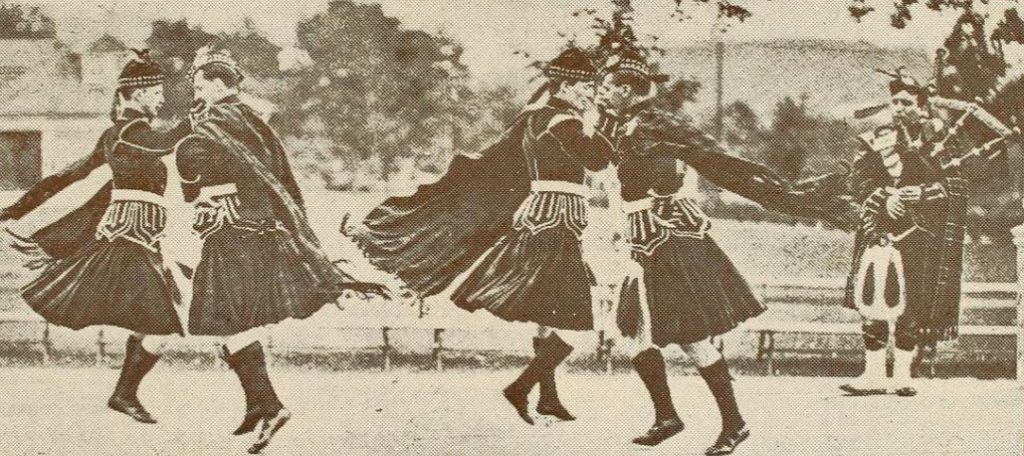
1913 Sells-Floto Circus
A group of 24 Kilties returned to Spokane a third time in 1913, performing with the Sells-Floto Circus on June 23 and 24. They marched in a daily noon parade and gave concerts.
The Kilties also traveled to Coeur d’Alene for the Fourth of July, leading an illuminated nighttime parade that stretched ten blocks.
1913 Interstate Fair
That September, another band calling themselves the “Kilties” visited Spokane for the Interstate Fair. This band was from the 72nd Seaforth Highlanders, an army unit created in Vancouver, B.C., as part of the British Seaforth Highlanders.
The Kilties were a highlight of the fair. “Follow the Kilties to the Fair Grounds,” proclaimed local newspapers. They led the parade that kicked off the week-long event on September 15.
The band held daily concerts during the fair. On September 19, local Scots held a formal ball for the group at the New Madison Hotel. Several of the members provided music and performed traditional dances.
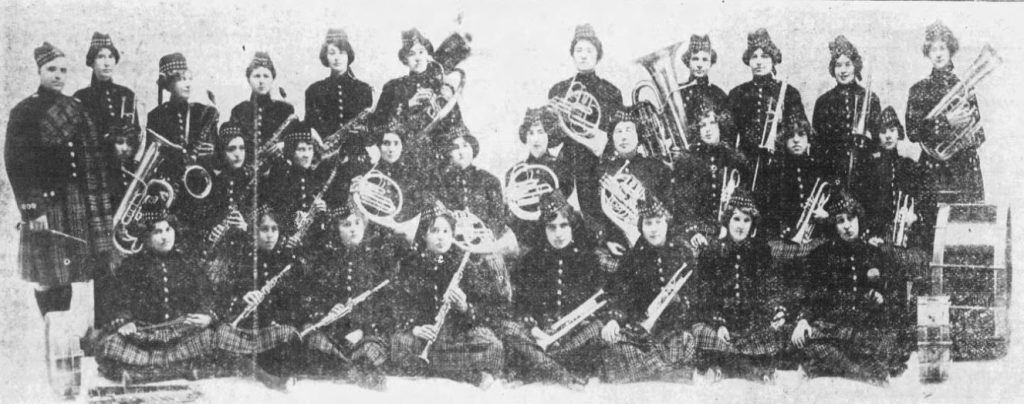
Lady Klities, 1913 Apple Show
That November, another “Kilties” group came to Spokane, the Lady Kilties. Not affiliated with the other “Kilties” bands, it was an Ottawa-based 28-piece all-women unit. The women were of Scottish descent from Canada and the US and two were born in Scotland. One member, trombone soloist Frankie Tice, was originally from Spokane.
The Lady Kilties performed daily at the sixth annual National Apple Show, with concerts in the afternoon and evenings. They also played at the coronation of Clark Walker as “King Pip VI,” monarch of the festival.
Their music was more popular American than traditionally Scottish. For example, on the last day of the show, Saturday, November 22, they played songs such as “Stars and Stripes Forever” and “Bluebells of Scotland.” Elsie Johnston danced the Highland Fling.
The Ad Club hosted them for lunch on the November 19. Thursday, November 20 was “Kilties Day.” Ten children from Professor Bouley’s dancing class performed the Highland Fling, Sword Dance as well as “American” dances. Dinner was at the Shriners Temple. The next day the Chamber of Commerce and apple show management gave them an auto tour of Spokane.
After the festival, flutist Jennie Griff remained in Spokane, signing a contract to play for the Casino Theater.
A Scottish Legacy
Although its members came and went, the original Kilties band continued to perform internationally over the next few decades, visiting 20 countries on 16 world tours. The band disbanded in 1938, but members sometimes held reunions.
Although the Kilties’ Spokane concerts happened over a hundred years ago, Scottish heritage remains strong in the region with Angus Scott Pipe Band and events such as the annual Spokane Scottish Highland Games. The Kilties, no matter their band, would be proud.

